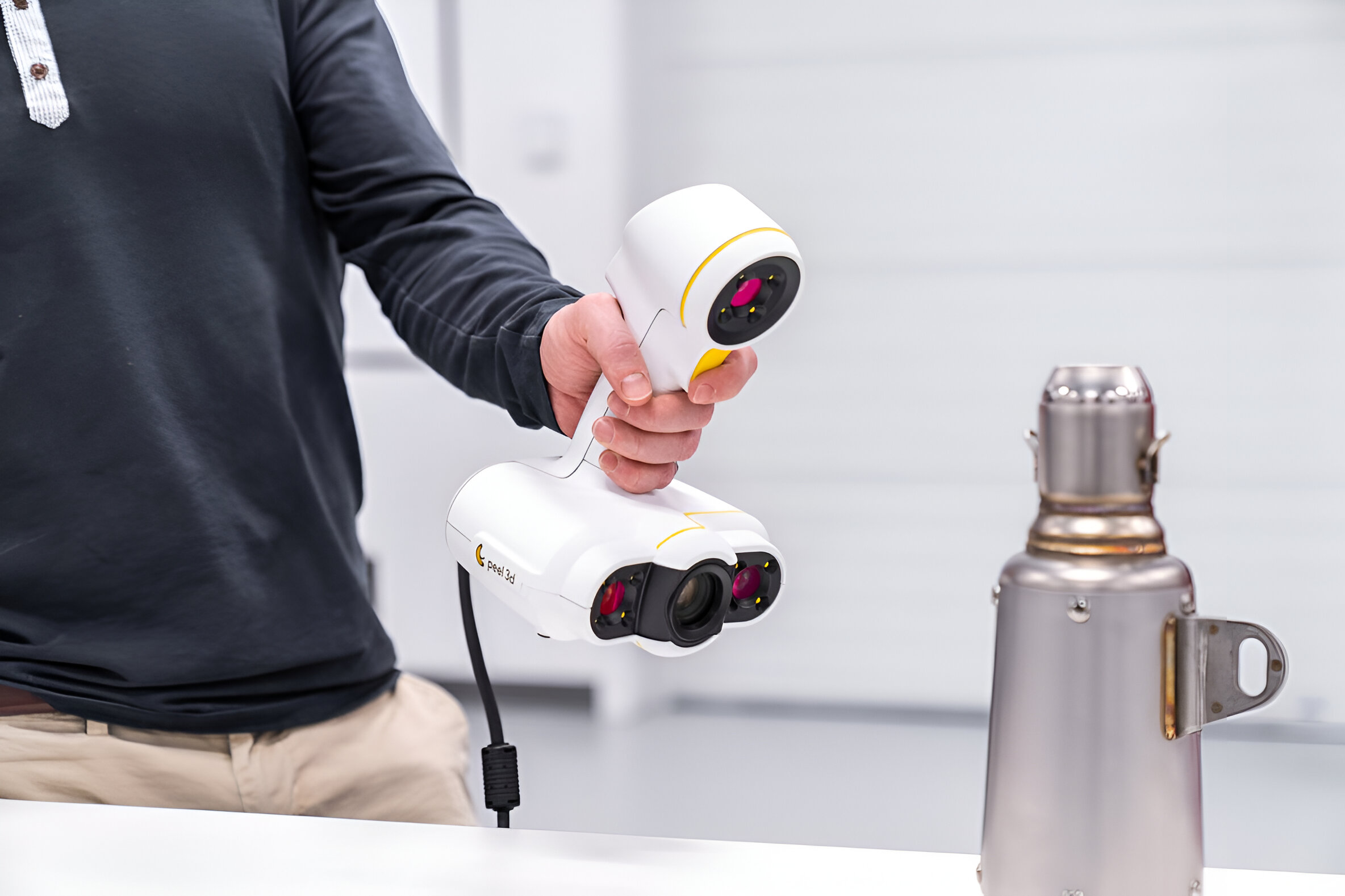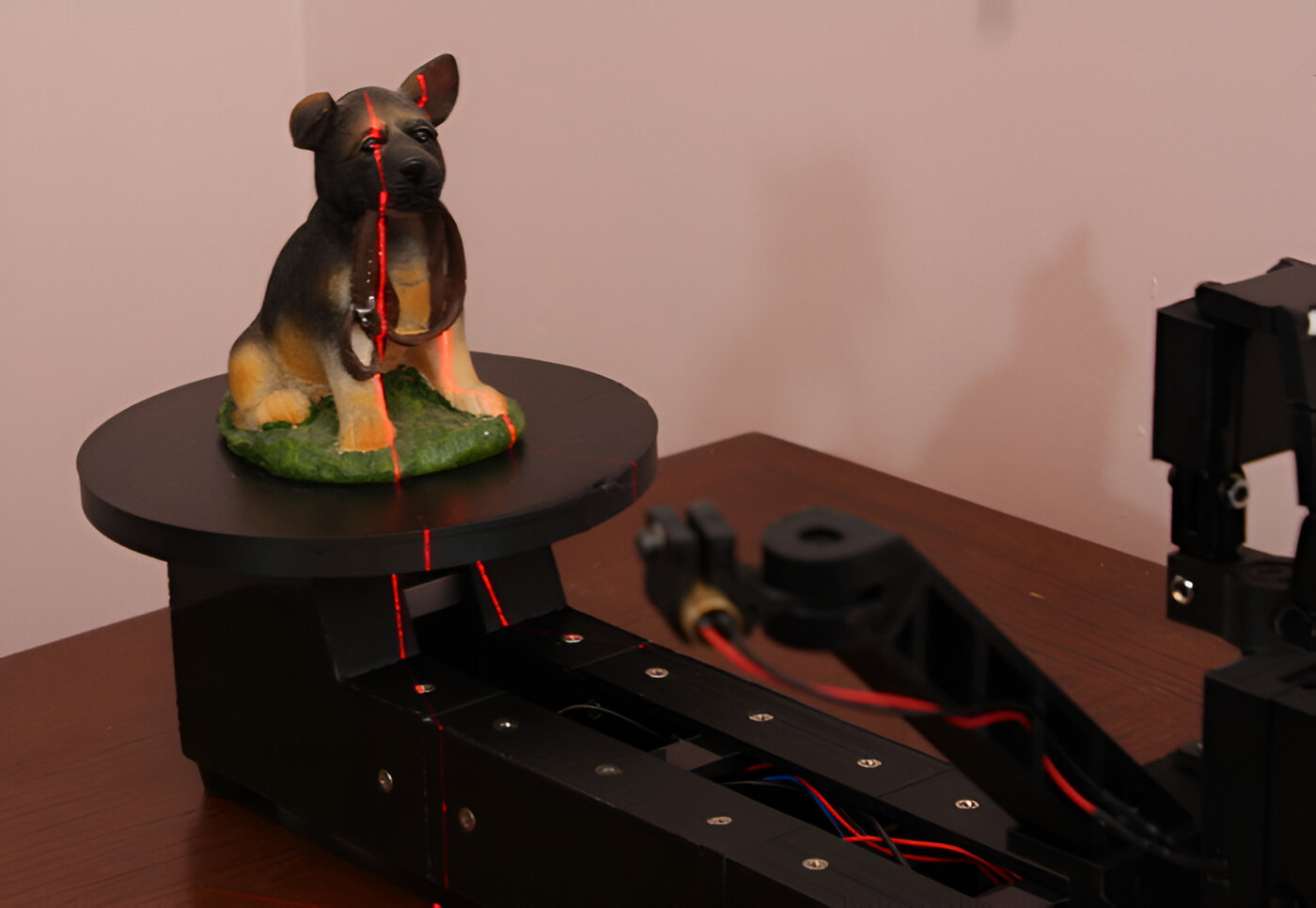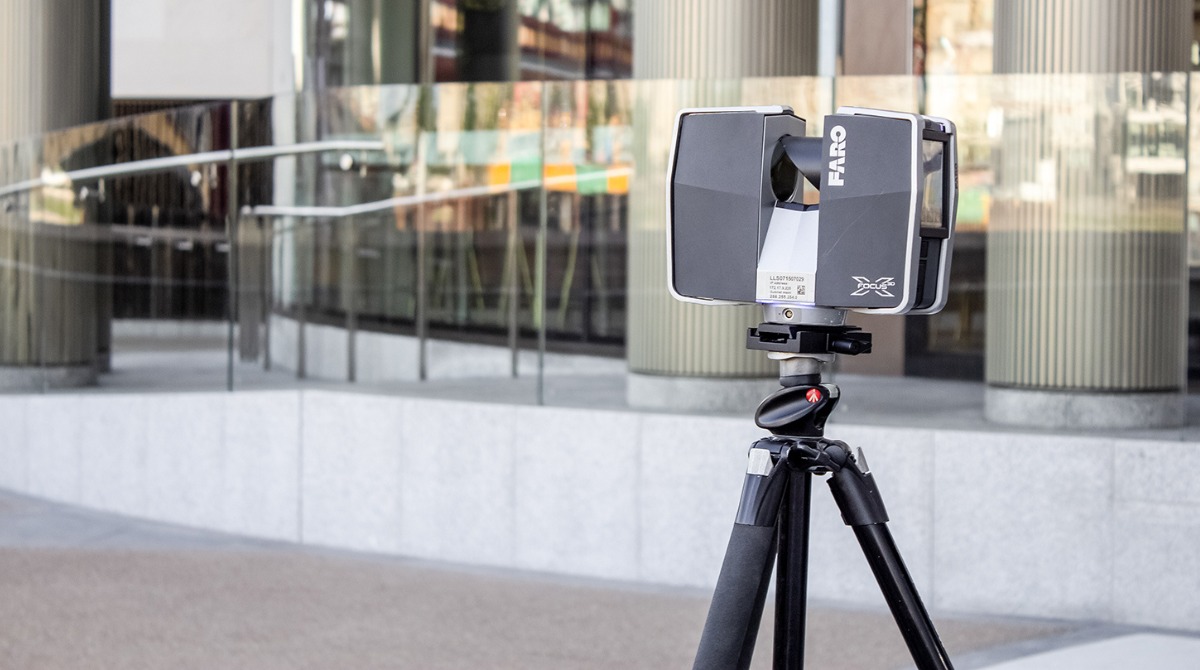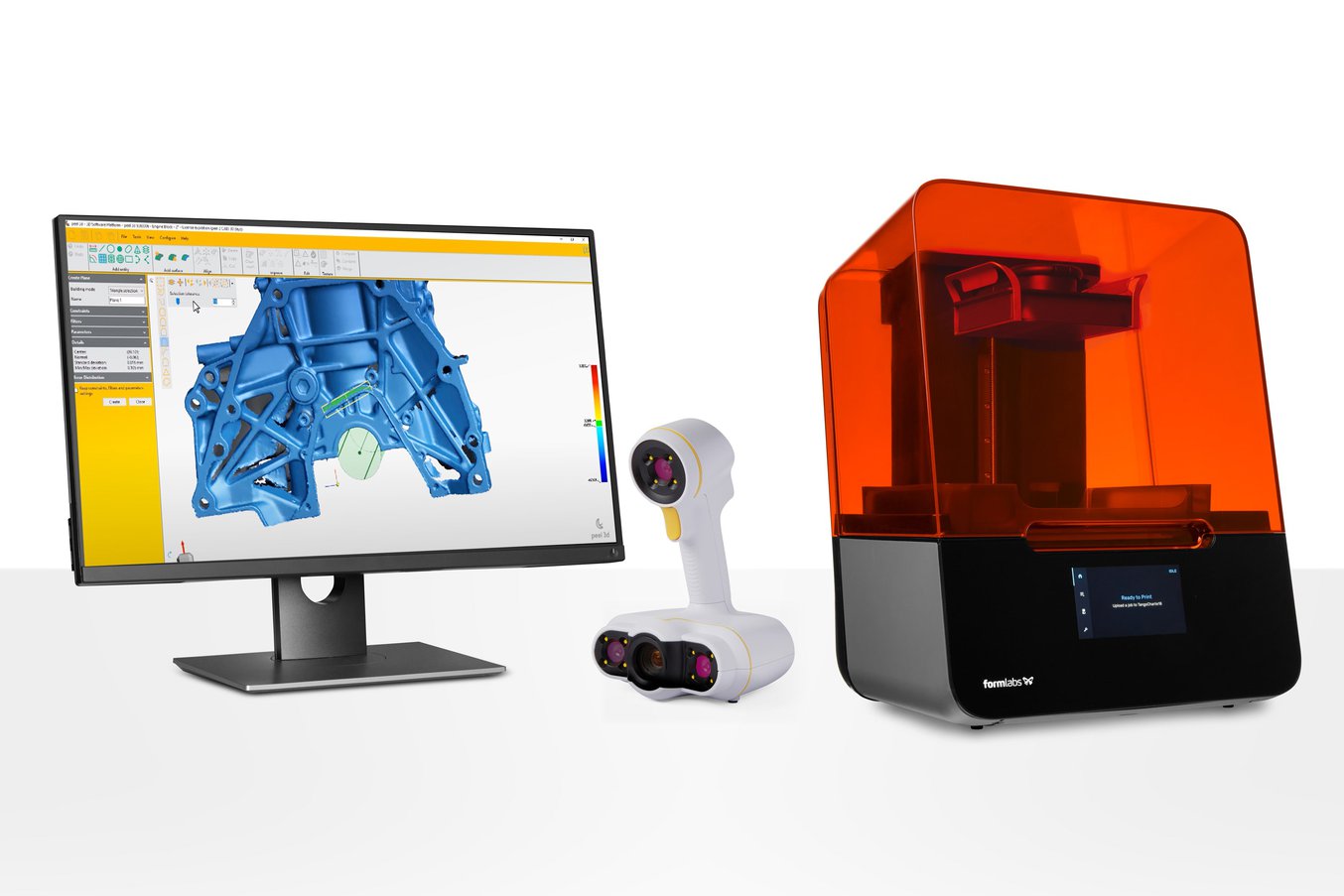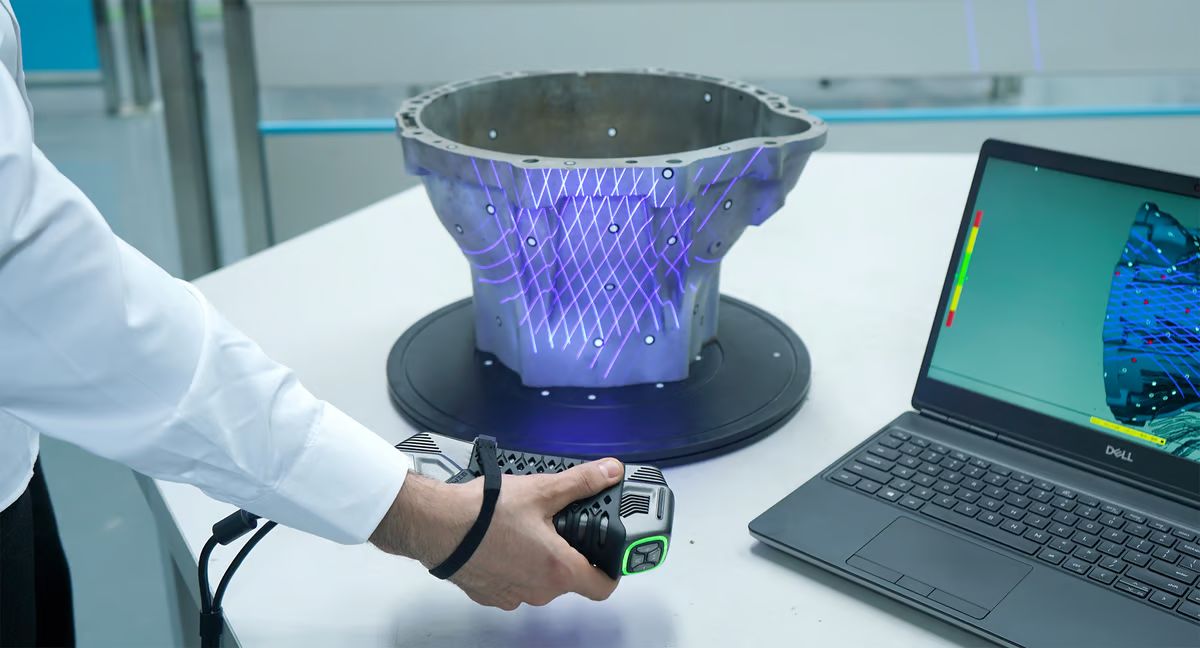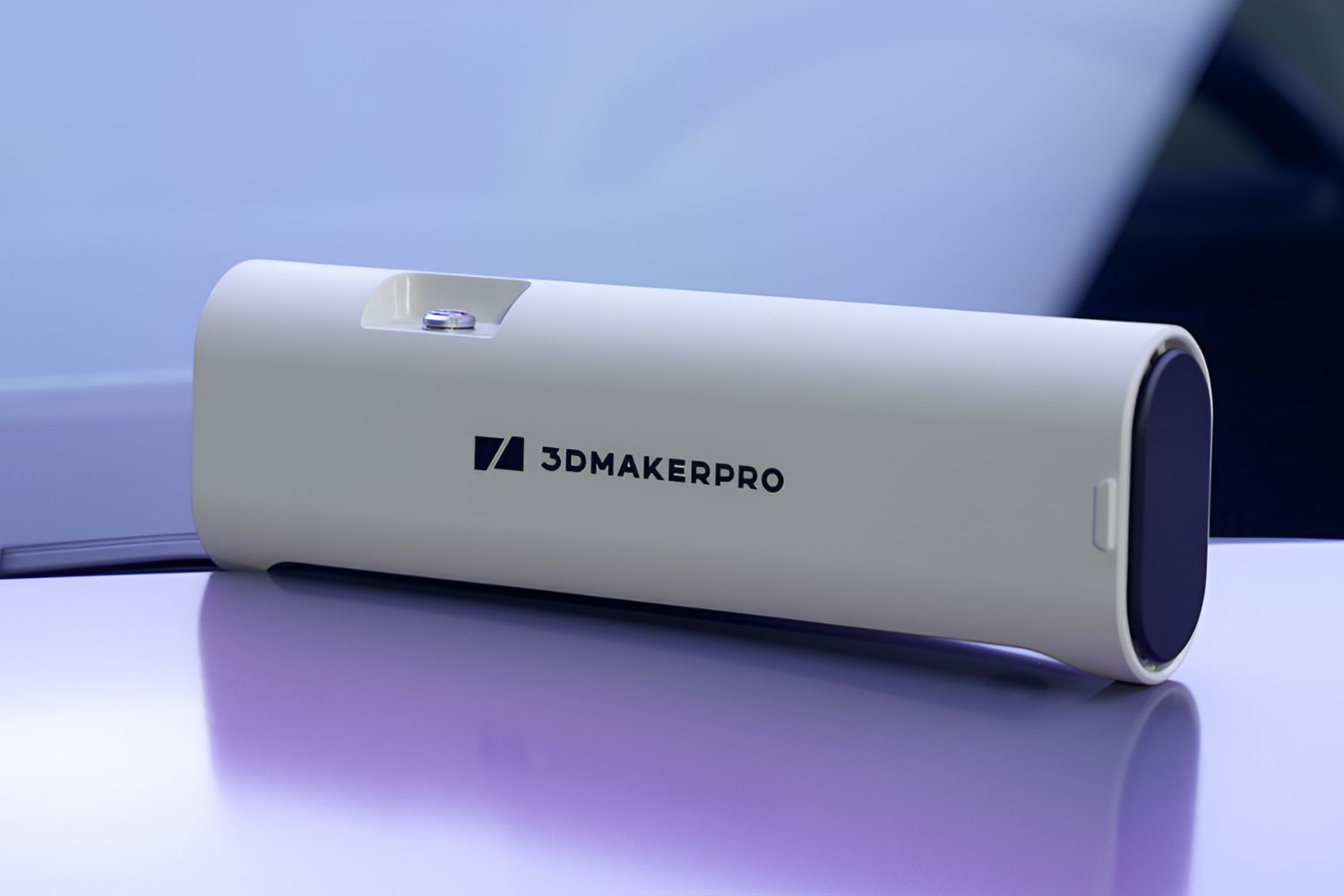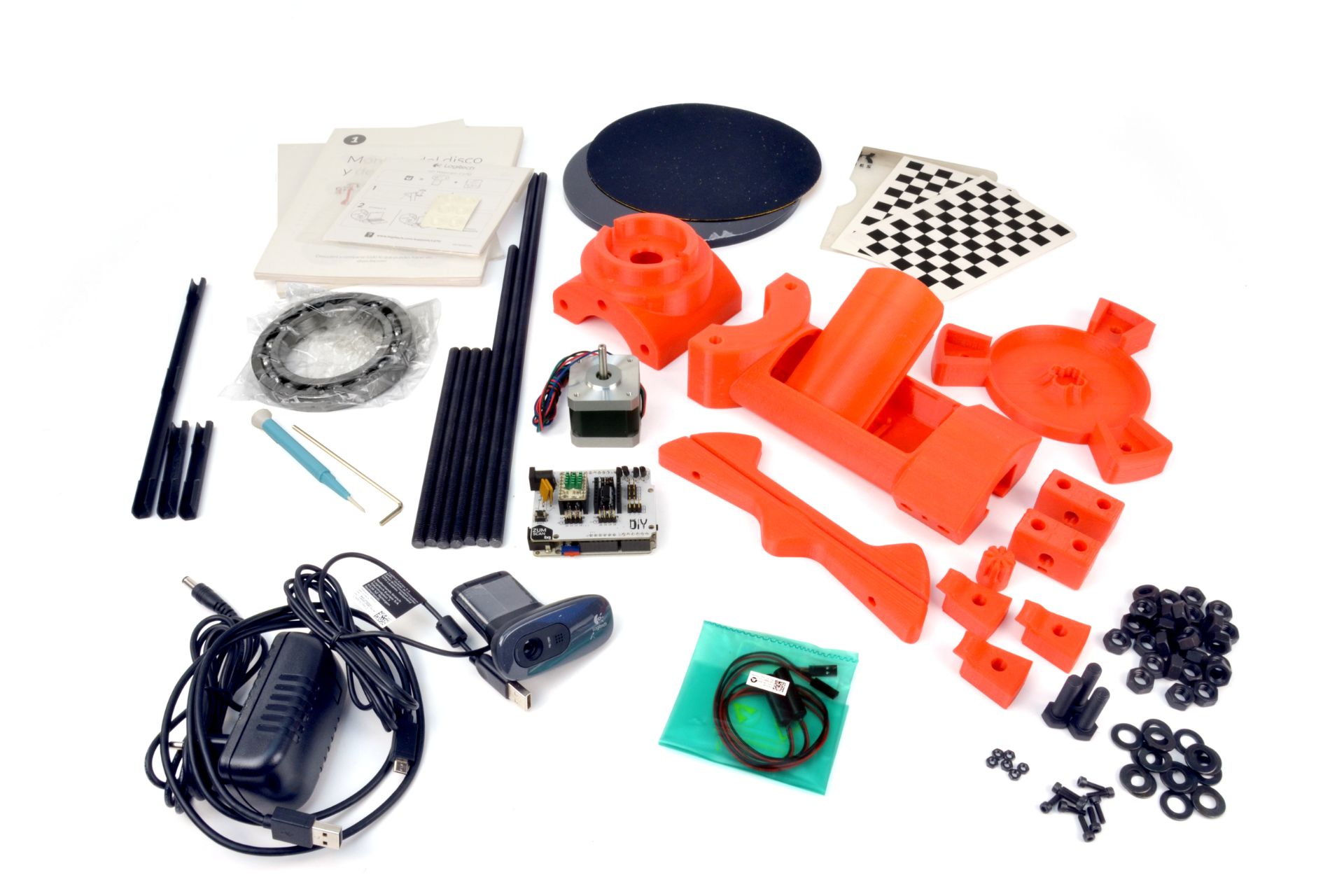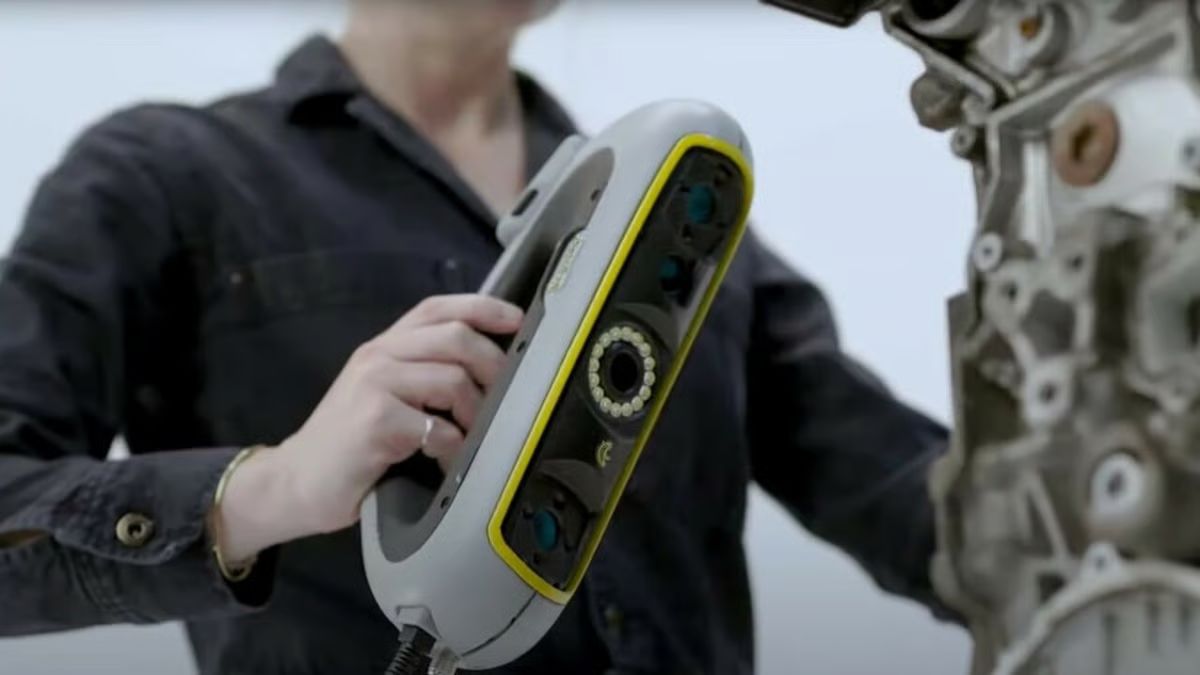Introduction
When it comes to purchasing a 3D scanner, it’s important to carefully consider several factors before making a decision. 3D scanners are innovative devices that capture the physical shape and details of an object and create a 3D digital representation. Whether you’re a hobbyist, a professional, or a business owner, investing in a 3D scanner can bring countless benefits to your work. However, with the wide variety of scanners available in the market, it can be overwhelming to choose the right one for your specific needs.
In this article, we’ll explore the key factors to consider when buying a 3D scanner. From accuracy and resolution to scanning speed and software compatibility, we’ll cover everything you need to know to make an informed decision. By understanding these factors and evaluating your requirements, you can ensure that you select a 3D scanner that meets your expectations and provides optimal results.
Additionally, it’s crucial to keep in mind that the world of 3D scanning is constantly evolving. New technologies and features are being introduced regularly, improving the capabilities and functionality of scanners. By staying up to date with the latest advancements and considering the factors discussed in this article, you’ll be one step closer to finding the perfect 3D scanner that aligns with your needs and budget.
Accuracy
One of the most important factors to consider when purchasing a 3D scanner is its accuracy. The accuracy of a scanner determines how closely the generated digital model represents the actual object. Higher accuracy means that the scanner can capture finer details and reproduce the geometry with precision.
Different scanners have varying levels of accuracy, typically measured in microns or millimeters. The accuracy may also vary depending on the type of object being scanned and its size. For delicate objects or intricate designs, a high-accuracy scanner is essential to capture even the smallest features accurately.
When evaluating the accuracy of a 3D scanner, it’s important to note that manufacturers may provide different specifications based on single-point accuracy, volumetric accuracy, or a combination of both. Single-point accuracy refers to how close a single measured point is to its true position, while volumetric accuracy takes into account the overall accuracy of the entire scanned object.
It’s also crucial to consider the scanning method employed by the scanner. Some scanners use laser-based technology, which can offer high accuracy but may have limitations when it comes to scanning reflective or transparent objects. On the other hand, structured light scanners use projected patterns to capture the geometry of an object and can provide excellent accuracy for most applications.
When choosing a 3D scanner, consider the level of accuracy required for your specific applications. If you’re working on precision engineering or intricate designs, investing in a higher-accuracy scanner is recommended. However, if you’re scanning larger objects or focusing on general shape capture, a lower accuracy scanner may be more suitable and cost-effective.
Resolution
In addition to accuracy, resolution is another crucial factor to consider when buying a 3D scanner. Resolution refers to the level of detail that the scanner can capture in the scanned object. It determines the level of intricacy and sharpness in the resulting 3D model.
Resolution is typically measured in terms of the number of points or triangles that make up the digital model. The higher the resolution, the more points or triangles are used, resulting in a more detailed representation of the object. A scanner with high resolution can capture fine features, textures, and surface details accurately.
It’s important to note that resolution is closely linked to the scanning method and the scanner’s hardware capabilities. Laser-based scanners, for example, often provide higher resolution compared to structured light scanners. However, it’s essential to assess your specific needs and consider the acceptable level of detail required for your applications.
When evaluating the resolution of a 3D scanner, pay attention to both the spatial resolution and the color resolution. Spatial resolution refers to the level of detail in the geometry of the model, while color resolution determines the quality and accuracy of color information captured in the scanned object.
In some cases, higher resolution may not always be necessary or practical. If you’re scanning large objects or focusing on capturing the overall shape rather than intricate details, a scanner with lower resolution might suffice. However, for applications such as 3D printing, reverse engineering, or product design, a scanner with higher resolution is recommended to ensure accurate and detailed representations.
Consider your specific requirements and the level of detail you need for your intended applications. Merging accuracy and resolution can provide you with optimal results, ensuring that you can capture and recreate your objects with the desired level of finesse and fidelity.
Scanning Speed
Scanning speed is an important consideration when buying a 3D scanner, especially if you have large-scale projects or time-sensitive deadlines. The scanning speed refers to how quickly the scanner can capture the data and create the digital model of the object.
Different scanners have varying scanning speeds, ranging from a few seconds to several minutes. The speed can depend on factors such as the scanning technology, the level of detail required, the complexity of the object, and the scanning software.
For applications where speed is crucial, such as quality control or rapid prototyping, a scanner with faster scanning speed can significantly optimize your workflow and improve productivity. On the other hand, if you’re working on smaller objects or projects that require high-resolution scanning, a slower but more precise scanner may be more suitable.
It’s worth noting that scanning speed can be influenced by other factors as well, such as the processing power of your computer and the capabilities of the scanning software. Therefore, consider the scanner’s overall efficiency and compatibility with your existing hardware and software infrastructure.
Additionally, some scanners offer advanced features like automatic alignment and multitasking capabilities, which can further enhance scanning speed and efficiency. These features allow you to scan multiple objects simultaneously or streamline the alignment process, reducing the overall scanning time.
Ultimately, the scanning speed should align with your specific requirements and project demands. While faster scanners can expedite the scanning process, it’s important to find a balance between speed and the level of detail required for your applications. Selecting a scanner with the appropriate scanning speed can ensure efficient workflows while maintaining the desired level of accuracy and resolution.
Size
The size of the objects you intend to scan is an important factor to consider when purchasing a 3D scanner. Some scanners are specifically designed for small objects, while others can accommodate larger or even full-body scans.
Consider the maximum and minimum size limits of the scanner. If you frequently work with small intricate objects, such as jewelry or dental models, a scanner with a smaller scanning area can provide the necessary precision. On the other hand, if you primarily work with larger objects, such as furniture or automotive parts, a scanner with a larger scanning area and depth of field will be more suitable.
It’s also important to consider the physical size and weight of the scanner itself. If you have limited workspace or require portability, a compact and lightweight scanner may be more practical. However, if you have a dedicated scanning area or a stable setup, a larger, more robust scanner may be preferable.
Furthermore, the size of the scanner can affect its versatility and ease of use. Smaller scanners may be more maneuverable and better suited for scanning objects in tight spaces, while larger scanners may require more effort to position and align properly.
When considering the size of the scanner, also take into account any additional equipment or accessories that may be needed for the scanning process. For example, if you plan to use a turntable or a tripod to rotate or stabilize objects, ensure that the scanner can accommodate these accessories comfortably.
By carefully considering the size requirements, you can choose a 3D scanner that matches the scale and dimensions of the objects you intend to scan. This will ensure that you can efficiently and effectively capture the desired objects with minimal limitations or compromises.
Portability
The portability of a 3D scanner is an important consideration, especially if you need to perform scans in multiple locations or on the go. Portability determines how easily you can transport the scanner and set it up in different environments.
There are various factors to consider when evaluating the portability of a 3D scanner. One consideration is the physical size and weight of the scanner. A compact and lightweight scanner is more convenient to carry and transport, making it suitable for fieldwork or scanning in different locations.
Another aspect to consider is the power source required for the scanner. Some scanners operate on battery power, offering greater flexibility for use in environments where electrical outlets may not be readily available. However, battery-powered scanners may have limitations in terms of scan time and overall efficiency compared to scanners that rely on a direct power source.
Additionally, ease of setup and calibration is crucial for portable scanners. Scanners that require minimal setup time and have user-friendly calibration processes make it easier to start scanning quickly, particularly when working on-site or in unfamiliar surroundings.
It’s also important to consider the robustness and durability of the scanner. Portable scanners should be designed to withstand transportation and potential rough handling. Look for scanners with sturdy construction and protective cases to ensure the longevity and reliability of the device.
Finally, consider the compatibility of the scanner with different operating systems and software. Portable scanners that are compatible with a range of devices, such as laptops or tablets, allow for greater flexibility and ease of use in various environments.
By evaluating the portability features of a 3D scanner, you can invest in a device that suits your mobility needs. Whether you’re capturing scans at client locations, conducting fieldwork, or moving between different offices or facilities, a portable scanner can offer the convenience and flexibility required to perform scans efficiently and effectively.
Price
Price is an important consideration when buying a 3D scanner as it directly influences your budget and return on investment. The cost of a 3D scanner can vary significantly based on factors such as the scanning technology, accuracy, resolution, and additional features.
It’s essential to establish a budget range before starting your search for a 3D scanner. This will help you narrow down your options and focus on scanners within your price range. However, it’s important to remember that price should not be the only determining factor when making a purchase decision.
Consider your specific needs and the level of functionality required for your applications. If you require high-precision scanning for professional or industrial purposes, you may need to invest in a more expensive scanner that offers advanced features and capabilities.
It’s worth noting that the price of a 3D scanner often reflects its quality, accuracy, and reliability. Cheaper scanners may offer limited accuracy, lower resolution, and a reduced range of features. However, they can still be suitable for certain applications or as an entry-level option for beginners.
When comparing prices, consider the overall value you will be receiving from the scanner. Assess the scanning capabilities, software compatibility, support and warranty, and other factors to determine if the price aligns with the functionality and level of performance you require.
It’s also a good idea to research and read reviews from other users to gain insights into the performance and reliability of different scanners within your price range. This can help you make an informed decision and ensure that you are getting the best value for your investment.
Ultimately, finding the right balance between price and functionality is crucial when purchasing a 3D scanner. Consider your budget, specific needs, and the potential long-term benefits that the scanner can provide to make an informed decision that aligns with your requirements.
Software Compatibility
When purchasing a 3D scanner, it’s important to consider its compatibility with the software you intend to use for processing and manipulating the scanned data. The software plays a crucial role in generating the final 3D models and extracting useful information from the scanned objects.
Not all scanners are compatible with every software program, so it’s essential to ensure that the scanner you choose is compatible with the software you plan to use. The software should have the necessary tools and features to process the scanned data effectively and create accurate representations of the scanned objects.
Consider whether the scanner comes with its own proprietary software or if it can be used with third-party software applications. Some scanners provide their own software packages that are specifically tailored to work seamlessly with the scanner’s features and capabilities. On the other hand, using third-party software may offer more flexibility and compatibility with a wider range of software tools and workflows.
Another factor to consider is the level of technical support available for the software. Ensure that updates and bug fixes are regularly released, and technical assistance is readily available in case you encounter any issues or need guidance in using the software effectively.
Additionally, consider the learning curve associated with the software. Some software programs may have a steeper learning curve, requiring more time and effort to master, while others may offer a more user-friendly interface and intuitive workflow. Choose software that matches your skill level and provides the necessary tools for your applications.
It’s a good idea to research the compatibility and functionality of the software before making a purchase. Compare different software options and read user reviews to get insights into their performance and ease of use. This will ensure that you can make the most of your 3D scanner investment and efficiently process the scanned data.
Overall, software compatibility is an essential consideration when buying a 3D scanner. Make sure that the scanner you choose is compatible with the software you intend to use, providing you with a streamlined and efficient workflow for processing and manipulating the scanned data.
File Format
When selecting a 3D scanner, it’s important to consider the file format in which the scanned data is saved. The file format determines the compatibility and versatility of the scanned models across different software applications and platforms.
There are various file formats commonly used in the 3D scanning industry. Some of the popular ones include STL (Standard Tessellation Language), OBJ (Wavefront Object), PLY (Polygon File Format), and STEP (Standard for the Exchange of Product Data). Each file format has its own advantages and limitations, so it’s crucial to choose a scanner that offers file formats suitable for your intended applications.
The STL file format is widely used for its simplicity and compatibility with most 3D printing software and slicing programs. It represents 3D objects as a collection of interconnected triangles without color or texture information. If your primary purpose for scanning is 3D printing, a scanner that can save files in STL format is recommended.
The OBJ file format is another popular option that supports both geometry and color information. This format is useful when working with visual effects, animation, or game development. It allows for the preservation of color and texture data, making it suitable for applications that require realistic and visually appealing 3D models.
Consider the software applications or processes you plan to use the scanned data with and ensure that the scanner can save files in compatible formats. Additionally, some scanners provide software that allows for the conversion of files into different formats, increasing their versatility and compatibility.
It’s also worth considering the level of compatibility with industry-standard file formats. This is particularly important if you need to exchange or collaborate with others who may be using different software or platforms. Choosing a scanner that supports widely accepted file formats increases the potential applications and usability of your scanned data.
By considering the file format compatibility of a 3D scanner, you can ensure that the scanned models can be seamlessly integrated into your workflow and used with the necessary software and applications. This will allow for efficient manipulation, rendering, and utilization of the scanned data across different platforms and processes.
Support and Warranty
When purchasing a 3D scanner, it’s important to consider the level of support and warranty provided by the manufacturer. Support and warranty ensure that you have assistance and protection in case you encounter any issues with the scanner or require technical guidance.
Before making a purchase, research the manufacturer’s reputation for customer support. Look for reviews or testimonials from other users to gauge their experience with the company’s support services. A responsive and knowledgeable support team can be invaluable should you encounter any difficulties during setup, calibration, or operation of the scanner.
Additionally, check the warranty terms and conditions offered by the manufacturer. A warranty provides protection against defects in materials or workmanship, giving you peace of mind that the scanner is covered for a specified period. Be aware of the duration of the warranty and what it covers, including any included repairs or replacement parts.
It’s also worth considering any additional support or training resources provided by the manufacturer. This can include online tutorials, user manuals, or knowledge bases that can help you maximize your understanding of the scanner’s features and capabilities. Having access to these resources can streamline the setup process and enhance your overall experience with the scanner.
Another aspect to consider is the availability of updates or upgrades for the scanner’s software and firmware. Manufacturers that offer regular updates and improvements to their scanning software can enhance the functionality and performance of your scanner over time.
Bear in mind that quality support and a comprehensive warranty can save you time, effort, and money in the long run. Should the scanner require repairs or replacement of any components, having a reliable support system and warranty ensures that you won’t be left stranded or incur unnecessary expenses.
Before finalizing your purchase, ensure that the manufacturer provides reliable support services, a comprehensive warranty, and access to resources that will help you make the most of your scanner’s capabilities. This will ensure a smooth and productive scanning experience while offering a safety net in case any issues arise.
Conclusion
When buying a 3D scanner, there are several factors to consider to ensure that you choose the right one for your specific needs. Accuracy and resolution are fundamental aspects that determine the level of detail and precision in the scanned models. Scanning speed and size play a role in the efficiency and versatility of the scanner, while portability allows for flexibility in scanning different objects in various locations.
Price is an important consideration, but it should be weighed against the functionality and value offered by the scanner. Additionally, software compatibility and file format support are essential to ensure seamless integration with your preferred software and workflows. Lastly, support and warranty provided by the manufacturer contribute to a positive user experience and offer peace of mind when purchasing a 3D scanner.
Each of these factors deserves careful evaluation based on your specific requirements, budget, and intended applications. It’s essential to strike a balance between the features, capabilities, and price to make an informed decision.
By thoroughly considering these factors, you can select a 3D scanner that aligns with your needs, whether you’re a hobbyist exploring the world of 3D printing or a professional seeking to optimize your scanning processes for industrial applications. Remember to research and read reviews, consult with experts if needed, and make use of trial periods or demos to ensure that the chosen scanner meets your expectations.
Investing in the right 3D scanner can unlock countless possibilities and revolutionize your work processes. By capturing accurate and detailed 3D models, you can enhance innovation, streamline workflows, and bring your creative ideas to life with precision. Whether you’re in the engineering, medical, architectural, or creative field, a well-chosen 3D scanner can be a valuable tool in your arsenal.
Take the time to evaluate your options and choose a 3D scanner that offers the features, capabilities, and support that best suit your needs. With the right scanner by your side, you’ll be well-equipped to embark on your 3D scanning adventures with confidence and achieve remarkable results.







